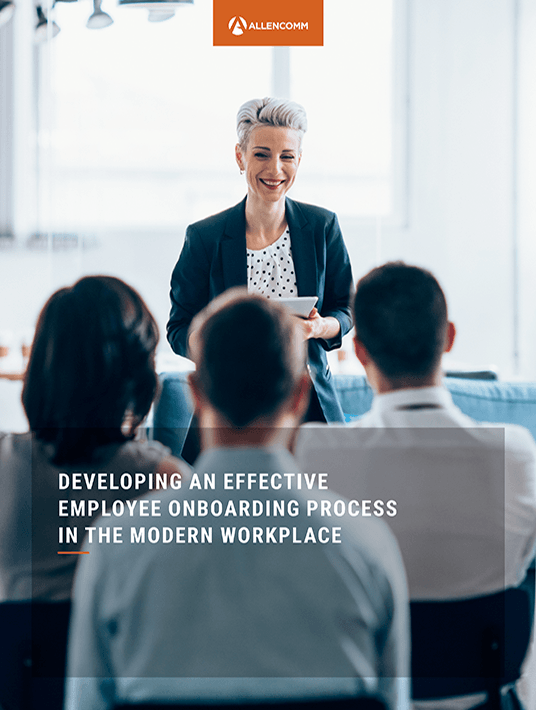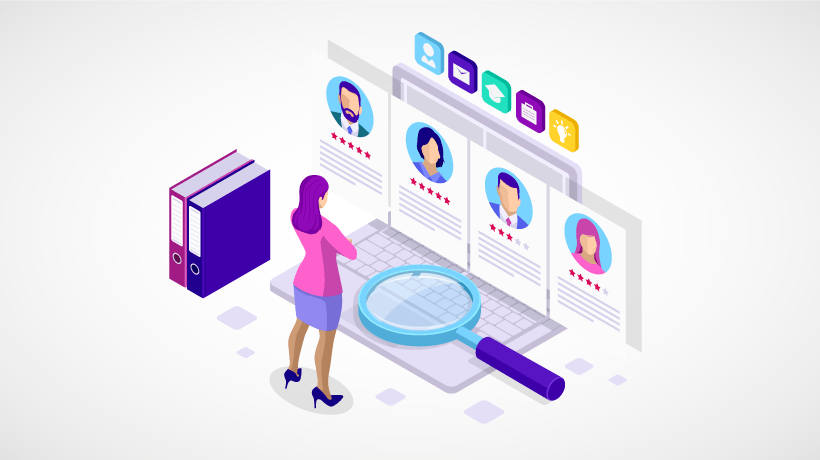How To Drive New Hire Performance
Whether you are bringing in a new employee or an employee is taking on new responsibilities, their ability to learn new skills and acclimate the company culture can determine their success. In order to maximize employee potential, L&D teams need to make sure learners have all the tools necessary to succeed. However, the path to competency is becoming more difficult to tread for the modern learner. That's why employee onboarding is so vital to organizational performance. Successful onboarding connects new employees with their company culture and increases their productivity while enriching the workforce as a whole.

The Brandon Hall Group found that strong onboarding improves retention by 82% and productivity by 70% [1]. But what does this mean for you and your employees? Basically, the better prepared your employees are for their jobs, the better they will perform.
So, here are 4 tips for creating an employee onboarding training that drives personal and professional performance.
1. Set Clear Learning Objectives
It's simple enough to give new hires information about their company and the responsibilities of their role. But setting clear objectives for their integration into the company is an invaluable way to add structure to employee onboarding. Create clear objectives for new hires as they move through the learning experience. Then, map out a schedule with specific expectations for skills and knowledge acquisition using these objectives. Some common objectives include:
- Have a clear first impression of the culture and work environment
- Understand their job duties, policies, and team dynamics
- Understand the role of managers and other co-workers
The more specialized the role, the more job-specific onboarding content there will be. For example, some employees will need to know how to use internal Project Management platforms quickly, while others may need training on sales automation platforms like Salesforce.
2. Consider Your Audience
Modern learners are well-versed in common recreational technologies and platforms [2]. So, training must become more responsive and intuitive than ever before. New hires are agile, exploratory, and resourceful individuals, and it makes sense that our learning program design should reflect and support that. Flexible learning solutions foster better comprehension and professional development.
3. Getting Leadership Buy-In
Innovative training tech sounds great, but it's often hard to get buy-in from leadership for drastic changes. Generally, business unit leaders drive organizational change. This holds true in corporate training as well. So, if your leaders actively support an employee onboarding initiative, then their teams will be more motivated to engage with the content.
But how do you get your leaders on board? First, do your research. Present the numbers. For example, how much does poor performance cost their team? What's the percent of employees lost and the cost to replace those employees, compared to your goal retention rate and potential savings? Share some research on how retention and employee performance are impacted by onboarding.
You have buy-in from leadership, but now what? Implementing a new training protocol all at once is not always realistic. Once you know how you plan to redesign your onboarding process, start with the most critical skills and knowledge. Then, phase in additional technology and processes.
4. Keep Up
Keeping onboarding content up-to-date can be difficult, particularly when there's poor communication between L&D and business units. But this is still no reason to have outdated training. Your new hires will struggle if they don't have the right information, and it’s the responsibility of L&D teams to enable success.
Beyond simple changes in policies, business units continuously improve upon business processes. Corporate adoption of new technologies and processes has steadily increased with the availability of new and better business services. So, if changes have been made to the way your company does things, there’s a good chance your employee onboarding is out of date. If no major changes have happened, then you may only need a quick review. You will also want to have content authoring and content management platforms—either in-house or through your learning vendor—that ensure you always have the most up-to-date information available to your employees.
Finally, follow up with your employees after they complete their training to ensure the effectiveness and consistency of your training. Apart from keeping training up to date, it’s important to maintain the quality and efficacy of the learning experience. Staying up-to-date on content and performance gives you the opportunity to re-evaluate the learning experience design and training delivery when necessary.
Conclusion
Proven to increase employee satisfaction and productivity, employee onboarding training can help your business thrive in a growing corporate landscape. Whether you are looking to deploy a new training initiative or update your current onboarding training, the modern learner needs the skills and the confidence to succeed. For more tips on onboarding strategies, download our eBook Developing An Effective Employee Onboarding Process In The Modern Workplace!
References:
[1] The True Cost of a Bad Hire
[2] THE BEST TRAINING MIMICS RECREATIONAL TECHNOLOGY

